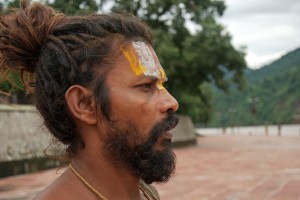
[the_ad_placement id=”adsense-in-feed”]
Ganga Andolan
With the government looking the other way, the life of the Ganga and Swami Shivanand are at immense risk
 By Rajendra Singh*
By Rajendra Singh*
Civilizations have perished when rivers were destroyed. History will repeat itself if the Ganga is not saved. Historical evidence points to the destruction of human civilization whenever prominent environmental changes have been made. Human history is thus also the history of human-nature interaction. Up to some 10,000 years ago, our ancestors were hunters and gatherers, surviving on roots. With the ending of the ice age around 10,000 years ago, humans began to cultivate and with this began the several changes in nature. As food security increased, population began to increase, villages were set up, cities began to be developed and trade was initiated. With this began a new human civilization. Mesopotamia (4,300), Egypt (3130 AC, Indus (BC 3300-1400) and China reached the peak of their civilizations. What was common in all of these civilizations was they were all set up in river basins, alongside rivers, in fertile river plains where the environment was favorable for advancing agriculture.
[the_ad_placement id=”content-placement-after-3rd-paragraph”]
Mesopotamia was set up in Western Asia within the Tigris-Euphrates river system, corresponding to present day parts of Iraq, Kuwait, eastern part of Syria, parts of Southern Turkey and regions along the Turkey-Syrian and Iran-Iraq borders. The Indus Valley civilization was set up in the fertile river plains of the Indus river. In China the Yellow river civilization and the Yangtze river civilizations were set in the Yellow river and Yangtze river basins.
Also read: Ganga Movement: Give Ganga its environmental flow
These civilizations were all progressive with agriculture: The Mesopotamians were the first to develop irrigation techniques. The success with agriculture also came from the fertile silt that was deposited by these rivers. The Nile civilization was possible because of the silt brought by the annual flooding of the Nile river. The White Nile is one of the two streams that forms the Nile river and emerges from Middle Africa. This merges with the Blue Nile in Ethiopia and enter Egypt. The While Nile travels through forests before entering Ethiopia and hence does not carry heavy loads of silt. The Blue Nile carries a heavy load of fertile silt since the forests were destroyed in Ethiopia. This silt was deposited in Egypt where agriculture flourished. This led to increasing populations, cutting of forests and decline in areas where wildlife flourished. But as jungles were cut in Egypt, the heavy load of mud led to reduced production and a decline of this civilization.
The Indus valley civilization was proficient agriculture, sciences, art and craft. Cities were set up. Excavations stand testimony to this. Evidence of trade activities have also been unearthed. Since weapons were not found, it can be assumed that this was a peaceful civilization. Heavy loads of mud deposits in the river raised the level of the river bed, recurring floods increased and proved to be a major cause of the decline of this civilization.
India continues to be at her best in technology, science, arts, agriculture and management. Unfortunately, the country is also ahead in nature over-extraction, overexploitation and destruction and mismanagement. This is evident from the scale of deforestation; indigenous biodiversity loss and invasion by foreign species; soil degradation; dying of streams and rivers due to excessive extraction, damming, encroachment and pollution; rising river beds and changing river courses; increased flooding and drought; decline in agricultural productivity; air and water pollution; accelerated glacier melting; and, changing monsoon patterns. All of these are cause for alarm and pose direct and imminent threat to our civilization.
We need to realize that history repeats itself and learn from the past. Today India’s civilization, spirituality, culture and faith are associated with the river Ganga. The river is extremely sick. The money is being spent on wrong treatment which are only adding to her illness. It is to seek appropriate treatment for the Ganga the Maa Ganga Satyagraha is going on. Today is day 22 of Swami Shivanand’s fast unto death at Matri Sadan in Haridwar. With the government looking the other way, it appears that the life of the Ganga and Swami Shivanand are both at immense risk. There is an urgent need to save both.
*The writer is an internationally acclaimed water conservationist and is also known as the Waterman of India. The views expressed are personal.






Like!! Thank you for publishing this awesome article.
Very good article! We are linking to this particularly great content on our site. Keep up the great writing.